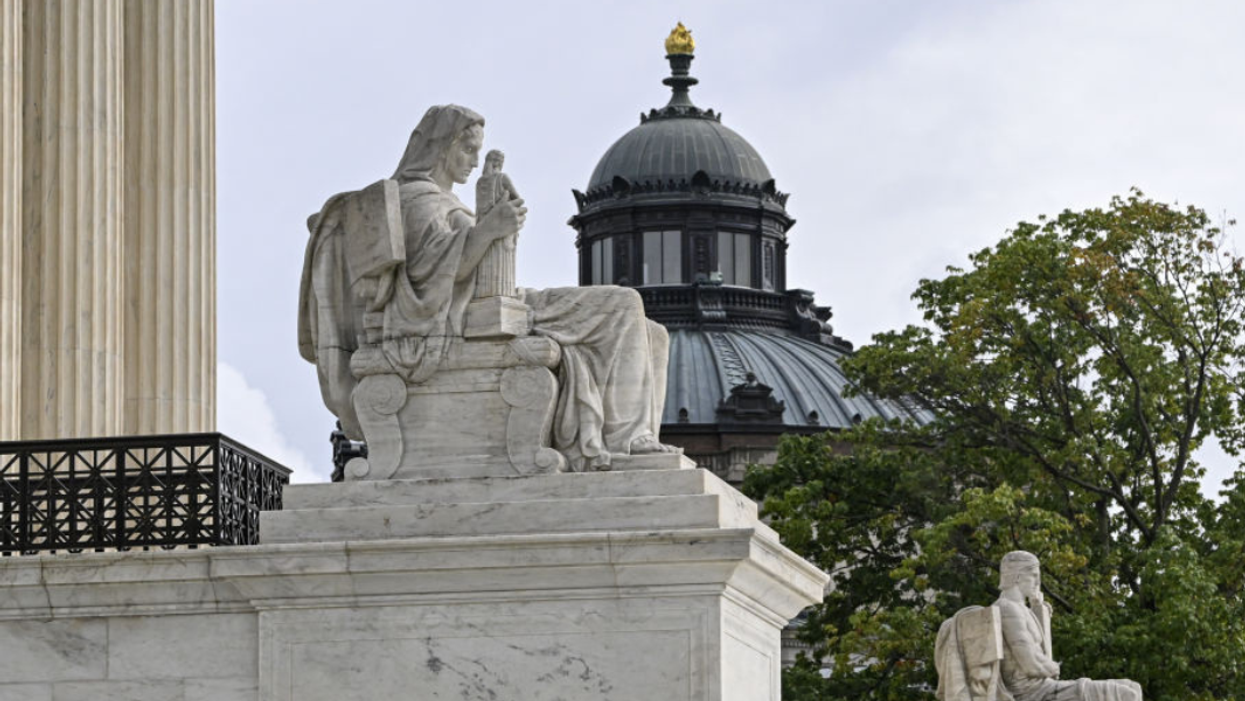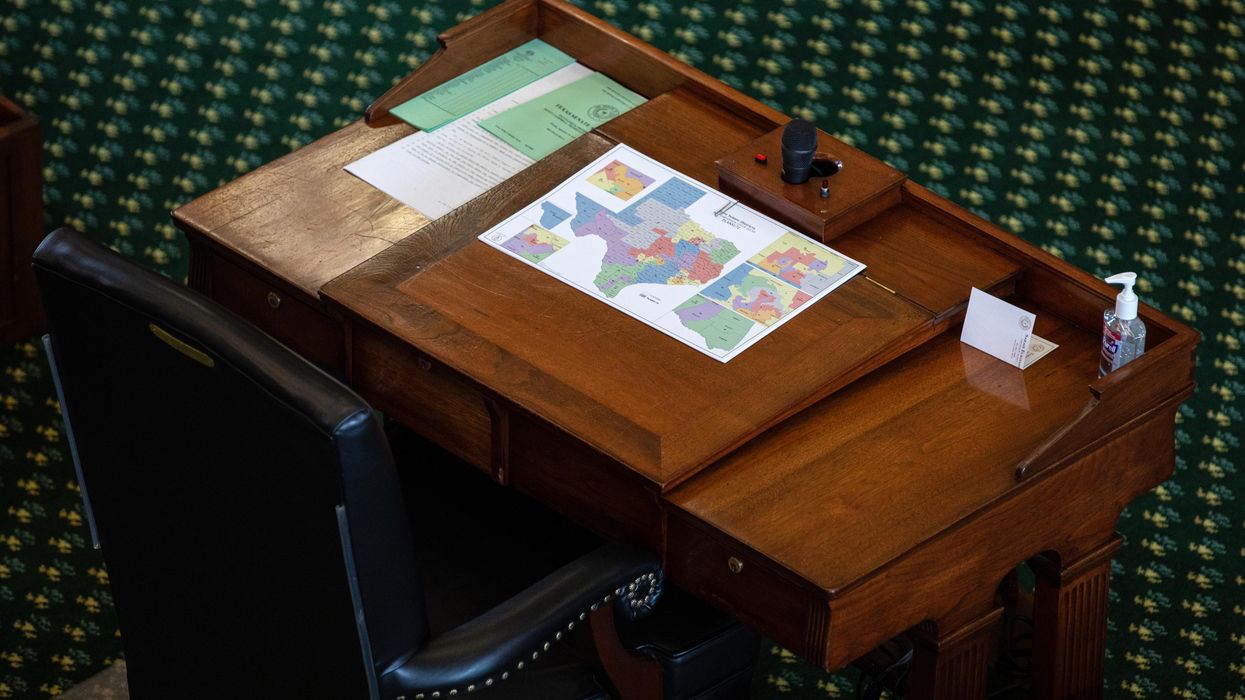Stephen E. Herbits is an American businessman, former consultant to several Secretaries and Deputy Secretaries of Defense, executive vice president and corporate officer of the Seagram Company, advisor to the President's Advisory Commission on Holocaust Assets, and secretary general of the World Jewish Congress. He was the youngest person to be appointed commissioner on the Gates Commission. Herbits' career has specialized in "fixing" institutions – governmental, business, and not-for-profit – with strategic planning and management consulting.
What’s 165 years, give or take a decade? Chief Justice John Roberts apparently seeks to imitate Chief Justice Roger Taney’s Dred Scott decision and other Taney approaches to undermining America’s democracy.
Both Chief Justices led courts to premise the right to vote and participate in the electoral process on race and wealth. Every student in America learned that Taney led us to an existential war on the future of America as a nation. Roberts actions seem to indicate that today’s court will do the same and the election of 2024 may determine whether that continues.
Roberts, of course, is refusing to deal with the ethics of the Court and earning it the lowest respect for the Court in our history. Even his wife earns a substantial income from assisting in hiring attorneys for law firms with cases before the Court.
But way more important than giving his Associate Justices permission to accept funds and non-cash benefits to those with cases before the court, a close look at his decisions affecting who votes parallels Taney’s decisions. Chief Justice Taney reflected the attitudes of his home state of Maryland, at the time a segregationist state seeking to protect the wealth of White Southerners, especially those dependent on slavery.
Chief Justice Roberts’s 2010 decision permitted the rich to provide unlimited funds to Super PACs without a requirement for disclosure, i.e., “dark money.” He denied the opportunity for Americans to make their own judgments as to what interests those donations have on candidates, legislation, or presidential decision-making.
Roberts, not for the last time, based his reasoning on that there would be no collaboration between the Super PACs and specific campaigns is worse than a partisan smile. A perusal of the personnel who lead these Super PACs and their historical relationships with candidates or policies proves the fiction of this reasoning. It would be laughable if it wasn’t so important. In the 2020 election cycle, SuperPACs spent more than $2.1 billion.
Apparently lobbying isn’t enough for corporations. The $300 million spent last year by Big Pharma to stop President Biden’s successful legislation to permit Medicare to negotiate prices on drugs left the industry with the belief that campaign contribution would help.
A related fiction is the nonsense that “corporations” are people, too. Where in the Constitution are corporations mentioned? Corporations are, in fact, creations of governments who have, since their creation, regulated them. But, heaven forbid, senior executives and shareholders should have a constitutional right to have a greater impact on elections than those who work for them or buy their products or services.
Then, of course, comes Roberts’ assault on Black voters. In 1981, when President Ronald Reagan instructed the Department of Justice to support renewal of the Voting Rights Act (VRA), Roberts, then a junior attorney at the DOJ argued that “Violations of Section 2 should not be made too easy to prove, since they provide a basis for the most intrusive interference imaginable by federal courts into state and local processes.” How easily he ignores the belief that most Americans hold that we are a nation, not a confederacy.
The Voting Rights Act led by President Lyndon Johnson was passed in 1965 to end the post-Civil War disenfranchisement abuses from the same states that attempted to segregate. Those Jim Crow states created an extensive list of ways to continue blocking Black voters’ ability to vote. Roberts’ attempts to reinstate Jim Crow, although subtle and not direct, are real.
Step-by-step over the last decade, Roberts has gutted the Voting Rights Act, ignoring Congressional intent, prior precedent, and deference to the political branches, Roberts “reasoned” that “current need” no longer justified the VRA review of state voting laws. Since then, of course, many states have further restricted voting with very specific attempts designed to prevent Black and poor voters from voting. Ballotpedia and the Brennan Center have documented the increases in restrictions on voting since Roberts’ decision in Shelby.
Last year, Roberts surprised the legal community (and others who follow the decline of America) with his 5-4 decision to say that Alabama’s district designs violated Section 2 of the VRA. This “switch” came partly because of the critically important and detailed work of the Campaign Legal Center’s publication revealing Roberts‘s anti-voting pattern of decisions.
But just perhaps, Roberts noticed that last year, Arizona overwhelmingly approved Proposition 211 in an otherwise hair-breadth election for statewide offices. Is there any question that voters want fairness and transparency, even in swing states?
No one should be fooled by Roberts’ “token” decision. In Shelby (2013), Roberts wrote: “Things have changed in the South.” Believing that we were in a post-racial society, Roberts was wrong then… and his behavior since has exacerbated the problem. Perhaps the most glaring example of giving a state the right to decide who votes, not who voters want to vote for came with Roberts’ decision to set no limits on gerrymandering, a decision that blatantly violates the Constitutional mandate of one-man (now one-person), one vote. Gerrymandering leads directly (doesn’t even need to pass go) to hyper-partisanship and racism– something anyone who studies election law knows. It was not an accidental outcome.
Partisanship by the Supreme Court undermines the fundamental premise of the checks and balances created in the Constitution. There is no question that the Federal government can set standards for Federal elections. Still, Roberts, like Taney, found a way to ensure that state’s rights can supersede our nation’s collective future, divide us along regional lines, and drive us towards more violence.
Roberts promotes his image as an institutionalist. The public need not be misled. His “institutions” means Whites and the wealthy.
It may or may not be a coincidence. Still, it is interesting to note that Freedom House, which measures “democracy” worldwide annually, has clearly stated that the U.S. has become less democratic since 2008 – the year John Roberts became Chief Justice. If America is not a leader in demonstrating what is good about democracy, it loses its ability to stand as a model for other nations…and ultimately our own national security.
Sources
- Data for Progress reports that “58% of respondents said the court is corrupted by big-money influences, compared to 30% who disagreed with that statement. Other surveys show similar or worse results.
- Outside Spending by Super PAC, Open Secrets
- Citizens United v Federal Election Commission, 558 U.S. 310 (2010)
- Shelby County v. Holder (2013)
- Allen v Milligan (2022)
- The independent, not-for-profit Campaign Legal Center, led by an attorney and former Republican Chair of the Federal Elections Commission, has explained Roberts’s election decisions succinctly and precisely.
- Neil Howe, The Fourth Turning is Here. 2023
































